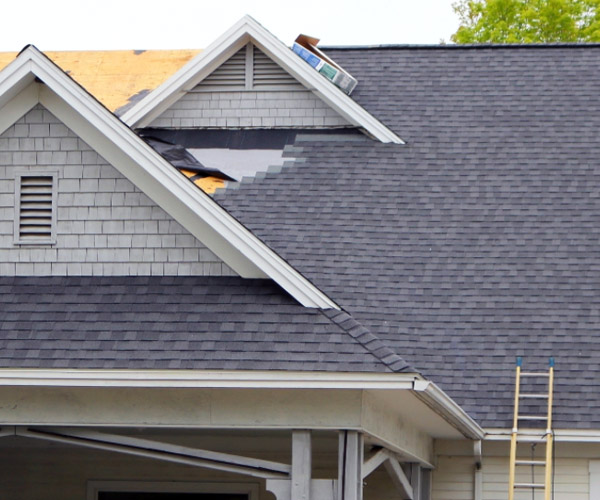Get an licensed Perrysburg Roofer to handle complex roof repairs.
Get an licensed Perrysburg Roofer to handle complex roof repairs.
Blog Article
Just How to Review Different Roofing Options for Your Structure Requirements
Reviewing roof covering alternatives for your building calls for a detailed approach that takes into consideration numerous aspects such as the intended usage of the framework, regional environment conditions, and material characteristics - Roofing Contractor. It is necessary to weigh the advantages and disadvantages of various roofing types, from asphalt tiles to steel and clay tiles, while additionally factoring in initial expenses and long-term maintenance.
Analyzing Your Building's Requirements
To successfully evaluate roof covering options, start by thoroughly examining your structure's needs. Beginning by considering the building's intended usage, as different frameworks may demand differing roof specifications. As an example, residential roofing systems frequently prioritize aesthetic appeals and insulation, while commercial structures may concentrate on durability and load-bearing capability.
Following, evaluate the local environment problems that will affect roof covering efficiency. Elements such as temperature level changes, rainfall degrees, and wind patterns can influence product option and style. A roofing system that stands out in a warm climate may not perform too in areas prone to heavy snowfall or extreme warm.
Additionally, analyze the structural integrity of your structure. Make certain that the existing structure can support the selected roof covering products, specifically if considering much heavier options. It is also vital to evaluate any kind of regional structure codes or guidelines that might determine specific requirements for roof.

Contrasting Roof Covering Materials
As soon as a comprehensive evaluation of your building's needs has actually been completed, the next action entails comparing numerous roofing products. Each material provides unique benefits and disadvantages, making it important to straighten your selection with your specific needs and situations.
Asphalt roof shingles are extensively recognized for their cost and convenience of installment, making them a popular alternative for household buildings. On the other hand, steel roof, recognized for its longevity and durability, can stand up to harsh climate condition yet might come with a greater initial financial investment.
Clay and concrete tiles offer superb thermal insulation and visual allure, specifically for Mediterranean-style style, yet they call for a more robust structural assistance as a result of their weight. Wood trembles offer an all-natural look and great insulation buildings yet may require extra upkeep and are prone to fire risks.
Assessing Price and Budget
Evaluating your roofing options requires a mindful examination of expense and budget plan factors to consider. The general allocate a roof covering project comprises several variables, consisting of material expenses, labor costs, upkeep, and prospective long-term cost savings. It is essential to develop a clear budget plan prior to checking out certain roof covering materials, as this will certainly lead the decision-making procedure and assist you avoid overspending.
Begin by getting quotes from several specialists to recognize labor prices in your area. Guarantee that these estimates include all essential solutions, such as removal of the old roofing system, installation, and any type of added attributes, like insulation or air flow enhancements - Roofing Contractor. Next, examine the cost of different roof materials, thinking about both preliminary installation expenses and expected life expectancy

Comprehending Power Performance
Power efficiency plays an essential function in the choice of roofing products and systems, substantially influencing both energy intake and general convenience within a structure. An appropriate roof covering can boost thermal performance, reducing the need for home heating and cooling systems, which subsequently decreases power bills and lessens environmental influence.
When examining roof covering choices, think about products that reflect as opposed to soak up warm. Light or reflective roof covering items can substantially decrease roof covering surface temperature levels, resulting in lower energy usage throughout warm months. In addition, proper insulation and ventilation are crucial to enhance the energy effectiveness of the entire roof. Insulation prevents heat transfer, while ventilation mitigates warm build-up in the attic room area.
An additional crucial aspect is the roof's longevity and maintenance demands. Sturdy materials that require much less regular substitute contribute to long-term power cost savings. Additionally, the power effectiveness of a roofing system can additionally be examined via its conformity with recognized sustainability rankings such as ENERGY STAR or LEED.
Taking Into Consideration Visual Charm
A roof's visual appeal considerably affects the general appearance of a structure, enhancing its architectural design and boosting visual charm. Sylvania Roofing advice Contractor. When examining roof covering alternatives, it is vital to consider exactly how the picked product, color, and design will harmonize with the existing framework and neighborhood. A properly designed roofing system can raise even the easiest of buildings, changing them right into aesthetic centerpieces
Different roof covering materials supply various visual qualities. Conventional roof shingles may stimulate a traditional charm, while steel roof covering can impart a modern, smooth look. In addition, the shade of the roof covering material plays a critical duty; lighter tones can make a structure appear more sizable, while darker tones might create a cozier setting.
Moreover, architectural aspects, such as dormers and eaves, can boost the roof covering's aesthetic influence. It is suggested to speak with specialist developers or designers to make certain the picked roof covering alternative lines up with the overall design intent. Eventually, a roof must not just offer useful benefits yet likewise contribute favorably to the building's aesthetic, showing the proprietor's preference and the character of the surrounding environment.
Verdict

Report this page